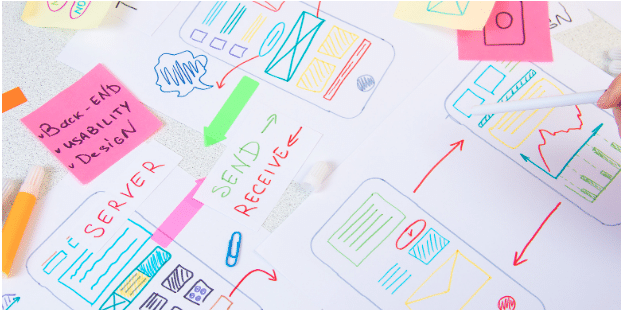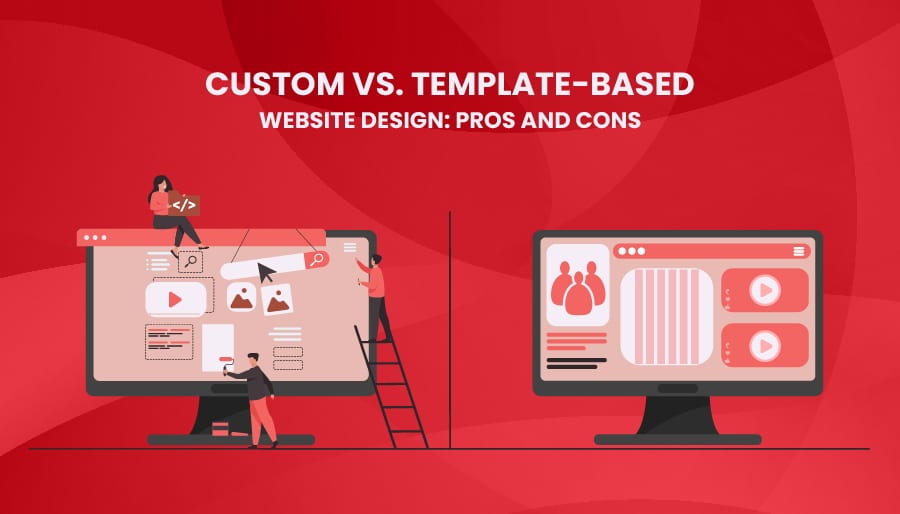The New Rules of Mobile Navigation Design
In a mobile-first world, navigation design can make or break the user experience. With shrinking screen real estate, touch-based interactions, and short attention spans, designers must rethink traditional desktop navigation for today’s mobile audience. This article explores the new rules of mobile navigation design and how to create intuitive, user-friendly experiences that align with modern user behaviors and expectations.
Why Mobile Navigation Deserves Special Attention
Mobile devices account for over half of global web traffic. That means your site’s mobile experience is likely the first — and possibly the only — impression users get. A confusing or cluttered mobile navigation will drive users away, increase bounce rates, and hurt conversions. Unlike desktop navigation, which has ample space, mobile interfaces demand simplicity, clarity, and speed.

Mobile Users Are Goal-Oriented
Mobile users typically browse with a purpose. They’re not leisurely exploring — they want fast access to information, products, or services. Good mobile navigation shortens the path to what the user wants while minimizing friction.
Thumb-First Design
Most users operate their smartphones with one hand, and specifically with their thumb. Designing navigation that is reachable and easy to interact with using just a thumb is a priority in 2025 and beyond.
Rule #1: Prioritize Simplicity
Simplicity in mobile navigation is non-negotiable. Users should not have to guess where to go next. Limit the number of primary navigation items and prioritize the most important destinations.
Use a Max of 5–7 Menu Items
Keep the main navigation short. If you have more than seven items, group similar content or place lesser-used links in a secondary menu or footer.
Stick to Recognizable Icons
Don’t reinvent the wheel. Use universally understood icons (e.g., hamburger menus, magnifying glass for search, shopping cart, etc.) and always pair them with text when possible for clarity.
Rule #2: Adopt Bottom Navigation
The bottom of the screen is now prime real estate. Placing navigation bars at the bottom makes them easier to reach with a thumb, which enhances usability.
Tab Bars Are King
Fixed bottom tab bars work well for mobile apps and increasingly for websites. They allow fast switching between key sections like Home, Search, Cart, and Account.
Don’t Overload the Tab Bar
Keep it limited to 4–5 items max. Too many tabs can crowd the UI and confuse users. For additional items, consider a “More” option or use expandable menus.
Rule #3: Design for Scannability
Users don’t read — they scan. This is even more pronounced on mobile. Navigation menus should be clean and easy to scan with clear headings and grouping.
Use Visual Hierarchy
Employ font weight, size, and spacing to indicate importance. Group related items together, and use visual dividers or whitespace for clarity.
Utilize Icons Thoughtfully
Icons can speed up recognition and scanning, but only when used consistently and alongside clear labels. Avoid over-decorating your navigation with meaningless symbols.
Rule #4: Progressive Disclosure
Show users only what they need when they need it. This keeps navigation simple while still offering depth.
Expandable Menus
Instead of showing every option upfront, use collapsible sections or accordions. For example, a “Services” section can expand to show subcategories.
Smart Search Integration
In some cases, especially with e-commerce or content-heavy sites, search becomes the most effective form of navigation. Ensure the search function is easy to find and fast to use.
Rule #5: Make It Fast and Responsive
Speed is a major factor in user satisfaction and SEO. Navigation should feel instantaneous and seamless. Avoid sluggish menus or complex animations that delay access to information.
Use Touch-Friendly Targets

Buttons and links must be large enough to tap without error. Follow accessibility guidelines: tap targets should be at least 48×48 pixels with sufficient spacing between them.
Prioritize Performance
Optimize assets, streamline code, and avoid loading unnecessary scripts for navigation. Fast-loading menus create a more polished, user-friendly experience.
Rule #6: Personalize Navigation Where Appropriate
With AI and behavioral tracking, personalized mobile navigation is becoming more common. Showing users relevant links based on their history or location can boost engagement.
Context-Aware Menus
Navigation that adapts based on the page, user’s preferences, or time of day can enhance the experience. For example, a logged-in user should see different navigation than a new visitor.
Sticky or Adaptive Nav Bars
Sticky navigation ensures users always have access to key links. Adaptive nav bars can change size or content as the user scrolls, preserving screen space while maintaining usability.
Rule #7: Test Everything
Mobile navigation isn’t one-size-fits-all. What works for one audience may frustrate another. A/B testing and analytics are essential for optimizing navigation over time.
Test Different Navigation Types
Experiment with bottom navigation, side drawers, full-screen overlays, or combo styles. Use tools like Hotjar or Google Analytics to monitor performance.
Gather User Feedback
Ask real users about their experience. Small usability tests can reveal blind spots and lead to big improvements.
Conclusion: Navigation is User Experience
Navigation isn’t just a functional element — it’s central to the user’s journey. The new rules of mobile navigation are about clarity, accessibility, responsiveness, and adaptability. As mobile usage continues to rise, investing in modern, user-centric navigation design will ensure your site remains competitive and user-friendly.






